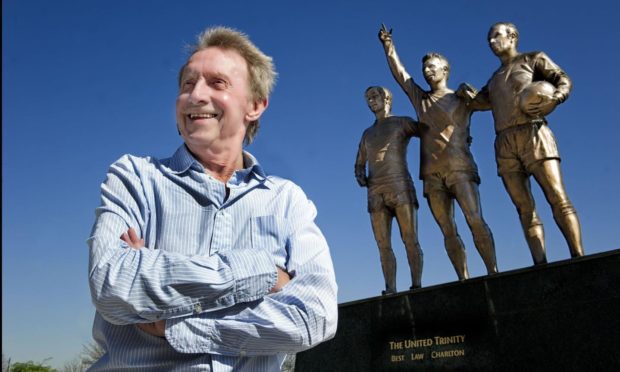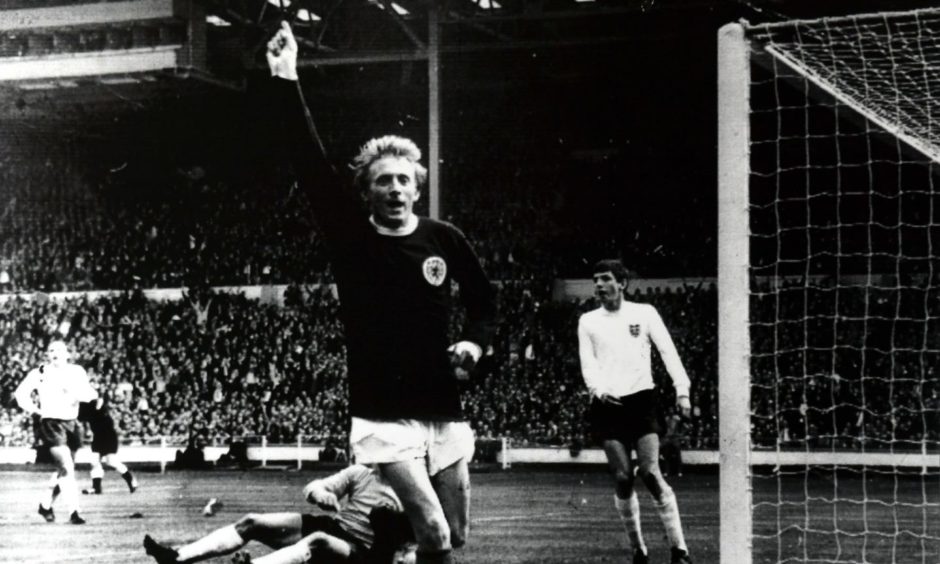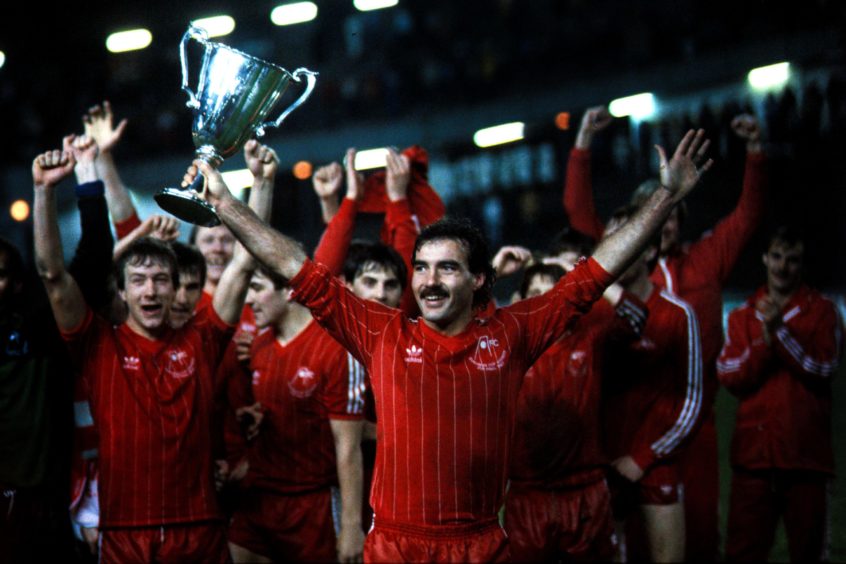Born in the Granite City in 1940, Denis Law is an icon of Aberdeen’s football history, even though he never played for a local team.
It has been proposed that a bronze statue of Law, created by renowned sculptor Alan Beattie Herriot, could be erected in the heart of the city.
Here, two football fans on opposite sides of the argument present their views for or against the statue.
For – ‘We should honour a hero who made a lasting global impact’
So first of all, we need to address the large marble elephant in the room. Statues are pretty stupid. There, I said it.
Public statues tend to fall into three categories. They’re either supported by ye olde estates and egos of wealth and influence, supported by the friends of ye olde wealth and influence, or they’re of quasi-mythical figureheads, like Lady Liberty, The Little Mermaid or William Wallace.
It’s not hugely surprising that statues of real men of wealth and influence (and – to be fair – some queens) are currently problematic. When we build statues, we’re quite literally cementing legacies, positions and deeds into the fabric of our cities. These aren’t inspirations to look up to, they’re the powerful looking down on a world they’ve conquered.
We couldn’t choose our kings or queens, but we can choose the heroes who represent us. If you were to draw up criteria for great Aberdonians, we’d want to celebrate those who made a lasting and significant global impact, and who remind people that they too can achieve greatness.
Law overcame the odds to become an icon
Other than Andy Considine, there aren’t many better examples of this than Denis Law. Not just as Scotland’s all-time leading goalscorer, nor as our first – and let’s call this now, only – Ballon D’Or winner. Not even as one of the most iconic footballers of the 20th century, but as an Aberdonian who overcame the odds to become one of the best in the world.
In the 1960s alone, Denis Law scored a staggering 263 goals
Law should never have made it to professional football, let alone the heights of Manchester United, City and Torino. The youngest of seven, he didn’t have shoes until he was 12, didn’t have football boots until a couple of years later, and wore glasses while playing until he was 14.
Two years later, he’d be a key part of Billy Shankly’s Huddersfield side. By 22 he’d broken the British transfer record three times. In the 1960s alone, he managed a staggering 263 goals, including 46 in all competitions for Manchester United,
and 11 in just seven matches for Scotland in 1963/64.
By comparison, in the last 30 years, only James McFadden (15), Kenny Miller (18) and Ally McCoist (19) can top that figure in their entire Scotland careers.
He changed the world with his talent
He’s a member of the Football Hall of Fame in England and Scotland, the only British player Pele wished was Brazilian, and the reason Mr and Mrs Bergkamp chose to name their son Dennis. The boy from Hilton changed the world with his talent.
As a city that loves its own, loves football, loves success, and has a unique, stony determination, I can’t think of anyone better for Aberdeen to literally look up to than Denis Law.
Thom Watt is a contributor to The Terrace football podcast
Against – ‘Denis Law is a hero but his achievements have already been celebrated’
It pains me to write this, especially as Denis Law is one of the nicest men I’ve met, but I’m not convinced his incredible success should be recognised with another statue.
I can fully understand why Aberdeen’s greatest sporting son is at the front of the queue when it comes to the discussion of whether he should have a statue erected in his honour. You would normally hear no complaint from me at all.
But we’re missing one crucial detail here – he already has one. Take a trip to Aberdeen Sports Village if you want to see it for yourself.
He is beloved, but Law doesn’t necessarily represent the city
I have pondered this one for a while and I have two questions. The first is: what should be the basis on which such an accolade is bestowed?
Is Law Aberdeen’s greatest sportsman? Quite possibly yes, although Paul Lawrie – who rose up the ranks to win the Open championship at Carnoustie in 1999, has played in two Ryder Cups and dedicated the better part of the last two decades to giving youngsters in the area the chance to play golf – deserves to be in this discussion too.
The day Aberdeen conquered Europe should be the lasting monument in the city. I doubt even Denis himself would disagree with that
He, like the Lawman, has represented his city with distinction. But where the two men differ is that Lawrie remains very much here in the north-east of Scotland. Law has spent almost all his adult life in Manchester and even has another statue outside Manchester United’s Old Trafford, recognising his achievements for the Red Devils.
Sir Alex Ferguson deserves recognition in Aberdeen
That statue leads to my second question: what takes precedence – sporting success for an individual or on behalf of the city?
If it is the latter then this debate should end here and now with the greatest sporting achievement in the city’s history, namely May 11, 1983 when Sir Alex Ferguson, long before his knighthood, took a provincial team and put it – and by association Aberdeen – on the world football map.
Sir Alex has a stand named after him at Old Trafford and a statue there too, but he does not have one here in the Granite City. Nor do any of his players who performed in a period which, let’s be honest, we will not see again for the Dons.
There are other worthy sporting moments to commemorate
There is no debate about whether Denis Law is deserving of a statue. That discussion has already been had and a decision made.
But if you really want to erect a lasting monument to the greatest sporting moment in the history of Aberdeen then there are only two options for me.
If it is not Sir Alex then it has to be a group statue of the Gothenburg Greats with Willie Miller, the man voted the greatest ever player in the club’s history by the fans, with his trademark pose holding the European Cup Winners’ Cup aloft with one hand.
The day Aberdeen conquered Europe should be the lasting monument in the city. I doubt even Denis himself would disagree with that sentiment.
Paul Third is a sports writer for The Press & Journal





